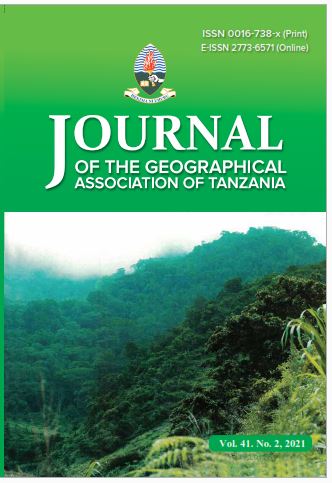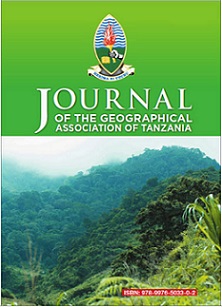Mixed Cropping as a Response to Climate Change in Manyoni District, Tanzania
Abstract
This article assesses the role of mixed cropping in response to climate change in Manyoni district, Tanzania. The study adopted a mixed research design where quantitative and qualitative research approaches were used. Simple random and purposive sampling were used to select respondents for the study. Household survey, in-depth interviews, focus group discussions, observation and document review methods were used to collect data. The household survey included 362 heads of households. Data on rainfall and temperature was collected from the Tanzania Meteorological Agency (TMA), while linear analysis was used to determine the trends of rainfall and temperature. The findings revealed that about 80.9% of the households engaged in farming perceived climate change through the decrease in rainfall, and 88.7% perceived it through the increase in temperature. The study found that mixed cropping is still a practical farming system in response to climate change due to various potentials associated with it, including: crop insurance, improvement of soil fertility, assurance of crop production, and minimization of pests and diseases that attack crops. The findings also revealed that not all farmers were practicing the mixed crop farming system due to various impediments, such as the impact of Western farming knowledge, and the lack of education and information about the usefulness of mixed cropping in response to climate change. The study concludes that mixed cropping as a traditional farming system is still viable, appropriate and a game-changer in dealing with climate change. Thus, it is recommended that collective strategies to promote mixed cropping as a traditional farming system be sustained to increase crop production. Keywords: mixed cropping, response, climate change, Manyoni District, TanzaniaDownloads
Published
2022-12-27
Issue
Section
Articles



